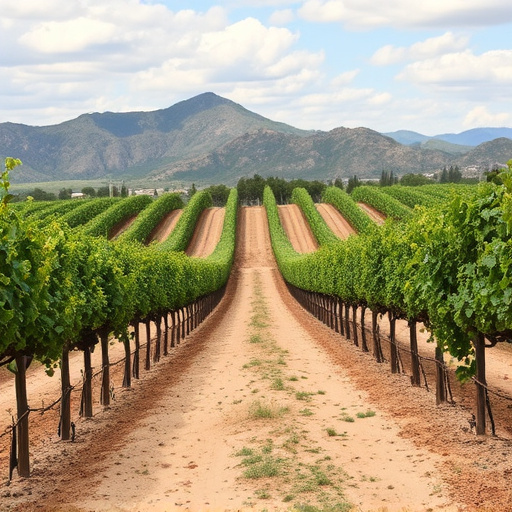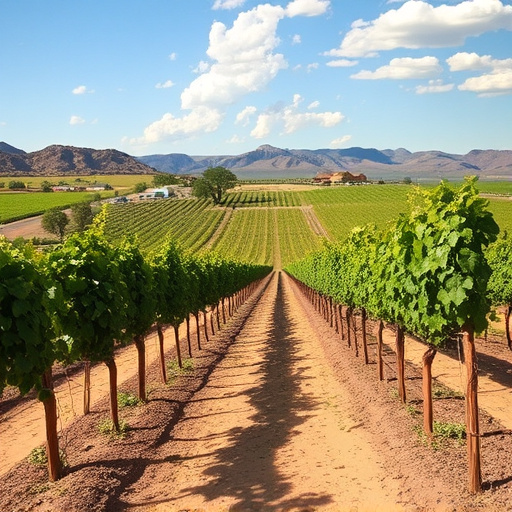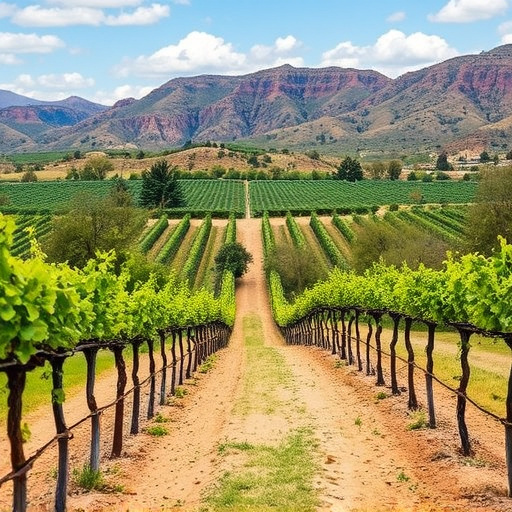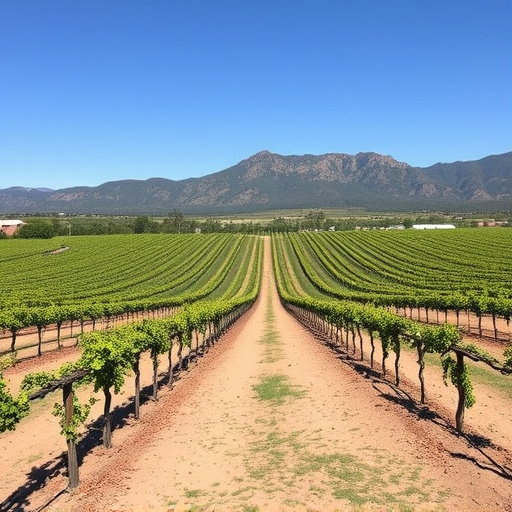Nestled in Arizona's Santa Catalina Mountains, Sonoita boasts diverse vineyards with unique terroir due to varying elevations, soil types, and microclimates. These factors create a wide range of flavors from crisp whites to bold reds, attracting wine enthusiasts exploring the region's vibrant viticultural landscape.
Discover the enchanting world of high-elevation wines in the vibrant vineyards of Sonoita, Arizona. This article takes you on a journey through the diverse wine country, exploring neighboring estates and their unique offerings. From terroir analysis to high-altitude impacts on flavor profiles, we uncover the secrets behind Sonoita’s distinctive aromas and palates. Dive into this comparison of neighboring estates, where each vineyard tells a story shaped by soil, climate, and elevation, creating a symphony of taste in Arizona’s burgeoning wine scene.
- Exploring Sonoita's Wine Country: A Geography of Taste
- Neighboring Estates: Similarities and Distinctive Flavors
- Terroir Analysis: Soil to Glass in Sonoita Vineyards
- High Elevation Impact: Alcohol Levels and Acidity Comparison
- Tasting Notes: Uncovering Unique Aromas and Palates
Exploring Sonoita's Wine Country: A Geography of Taste
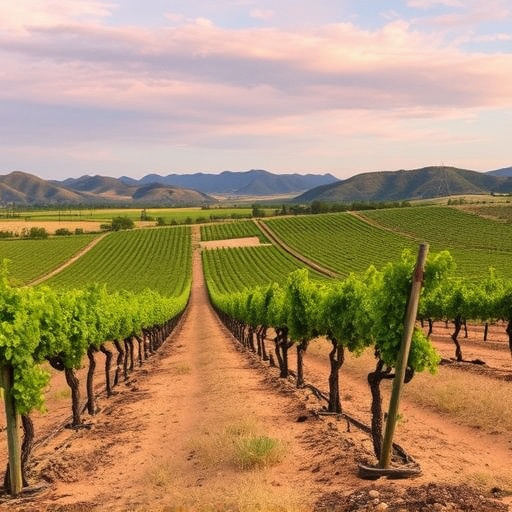
Sonoita, Arizona, nestled amidst the majestic Santa Catalina Mountains, is a hidden gem for wine enthusiasts. This charming town is renowned for its thriving wine country, boasting a collection of neighboring estates and vineyards that have become synonymous with exceptional craftsmanship. The unique geography of the region plays a pivotal role in shaping the distinct flavors and aromas of the wines produced here.
The high elevation at which these vineyards are situated offers a cool climate, allowing for slow-growing grapes that accumulate intense flavors. The varying microclimates within the area contribute to diverse terroirs, where each vineyard develops its own signature style. From sun-drenched slopes to shaded canyons, the diverse terrain ensures that every glass of wine tells a story of the land it originated from. Exploring the vineyards in Sonoita offers not just a sensory experience but also a journey through a landscape painted with vibrant hues of nature’s creativity.
Neighboring Estates: Similarities and Distinctive Flavors
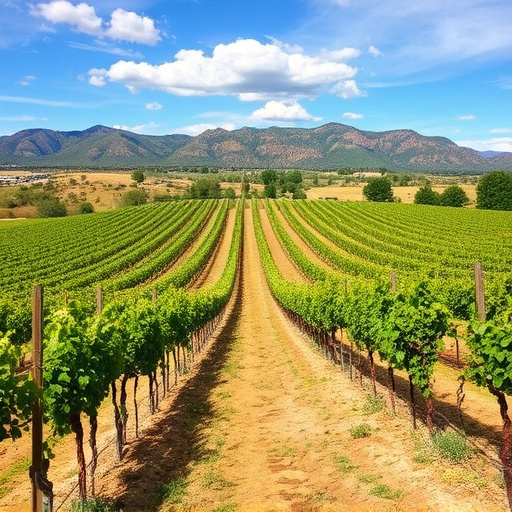
The vineyards in Sonoita, Arizona, are known for their unique terroir, with each estate offering a distinct character in the final wine. Despite being neighbors and sharing similar climates, the varying elevations, soil types, and microclimates create a remarkable range of flavors. Some estates thrive at lower altitudes, producing wines with vibrant fruit notes and a crisp finish, while others ascend to higher peaks, where cooler temperatures lend complexity and subtle floral or mineral undertones.
This diversity is what makes comparing high-elevation wines across neighboring Sonoita estates so intriguing. Each estate has developed its own signature taste, from the bold reds that reflect the region’s history of producing robust, full-bodied varieties, to the delicate whites that capture the area’s more recent focus on craft and precision viticulture. The result is a vibrant tapestry of flavors that showcases the depth and versatility of Sonoita’s wine country.
Terroir Analysis: Soil to Glass in Sonoita Vineyards
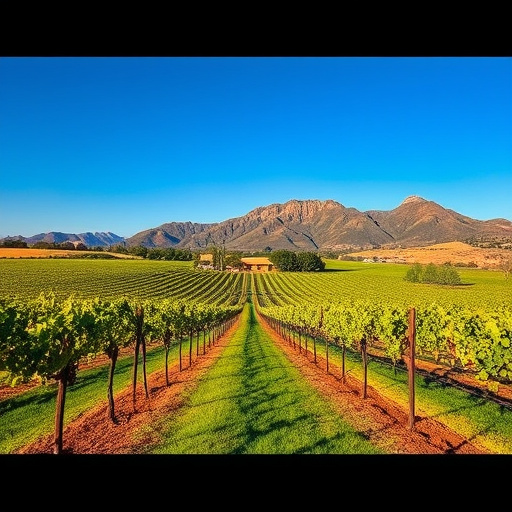
The unique terroir of Sonoita, Arizona, is a cornerstone of its renowned wine production. This small but vibrant region boasts diverse vineyards nestled among rugged mountains and desert landscapes. Soils in Sonoita vary from well-draining gravelly types to richer, more fertile loams, each influencing the character of the grapes they nurture. The area’s sun-drenched days and cool nights create a diurnal temperature shift that slows ripening, allowing for complex flavor development.
These environmental factors contribute to the distinct profiles of wines from neighboring estates. Terroir analysis reveals how soil types affect mineral expressions and acidity in the grapes, translating into the final wine’s aroma, taste, and structure. The diverse terroir of Sonoita not only provides a captivating range of flavors but also fosters competition among local wineries, pushing each estate to excel in their art, ultimately benefiting wine enthusiasts who get to enjoy these exquisite local productions.
High Elevation Impact: Alcohol Levels and Acidity Comparison
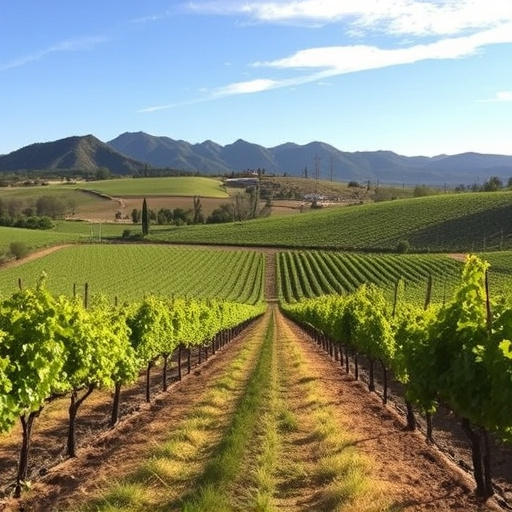
The unique microclimates of high-elevation vineyards in Sonoita, Arizona, significantly influence wine production. As elevations rise, temperatures drop, leading to later harvests and distinct flavor profiles. This variation is evident in the alcohol levels and acidity of wines from neighboring estates. Generally, higher elevations result in wines with lower alcohol content due to cooler nights that slow down fermentation. Consequently, winemakers in Sonoita’s vineyards often achieve a more delicate balance between sugar and acid, producing crisp, refreshing whites and reds.
Comparing adjacent estates, one might notice variations in these attributes even when using identical grape varieties. Soils and exposure to sun, along with elevation, play crucial roles in shaping the final product. For instance, some vineyards at higher elevations may yield wines with pronounced acidity that cut through rich flavors, while others might produce fuller-bodied wines due to slightly warmer days during ripening season. This diversity is what makes wine enthusiasts explore different estates within the Sonoita region, appreciating the subtle yet significant impacts of elevation on the final glass.
Tasting Notes: Uncovering Unique Aromas and Palates
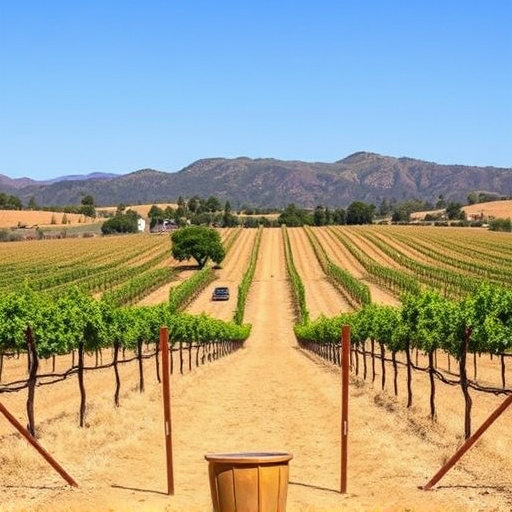
When exploring the wines from neighboring Sonoita estates at high elevations, one of the most captivating aspects is the distinct aromas and palates they offer. The unique terroir of these vineyards in Sonoita, AZ, translates directly into the character of their wines. Tasting notes may reveal a vibrant array of scents, from floral and fruity nuances to earthy and herbal undertones. These aromatic signatures are a result of the region’s climate, soil composition, and elevation, all of which contribute to the complexity and diversity of the wines produced.
Each wine has its own story to tell, with complex flavor profiles that can vary from estate to estate. High-elevation vineyards often produce wines with crisp acidity, balanced tannins, and a refreshing finish. These attributes make them stand out among other Arizona wines and offer a unique drinking experience. The sensory journey through these neighboring estates’ offerings allows wine enthusiasts to appreciate the subtle differences and distinct qualities that each vineyard brings to the table, showcasing the true potential of Sonoita’s thriving viticultural landscape.
In conclusion, the diverse vineyards in Sonoita, AZ, offer a fascinating exploration of terroir, each with its unique characteristics. By comparing high-elevation wines across neighboring estates, we’ve highlighted how factors like soil composition and altitude significantly influence flavor profiles. These insights not only enrich our understanding of wine appreciation but also showcase the distinct tapestry of tastes that the Sonoita wine country has to offer. Whether you’re a connoisseur or curious enthusiast, delving into these comparisons invites you to navigate the labyrinthine flavors and discover the indelible essence of each estate’s creation.
